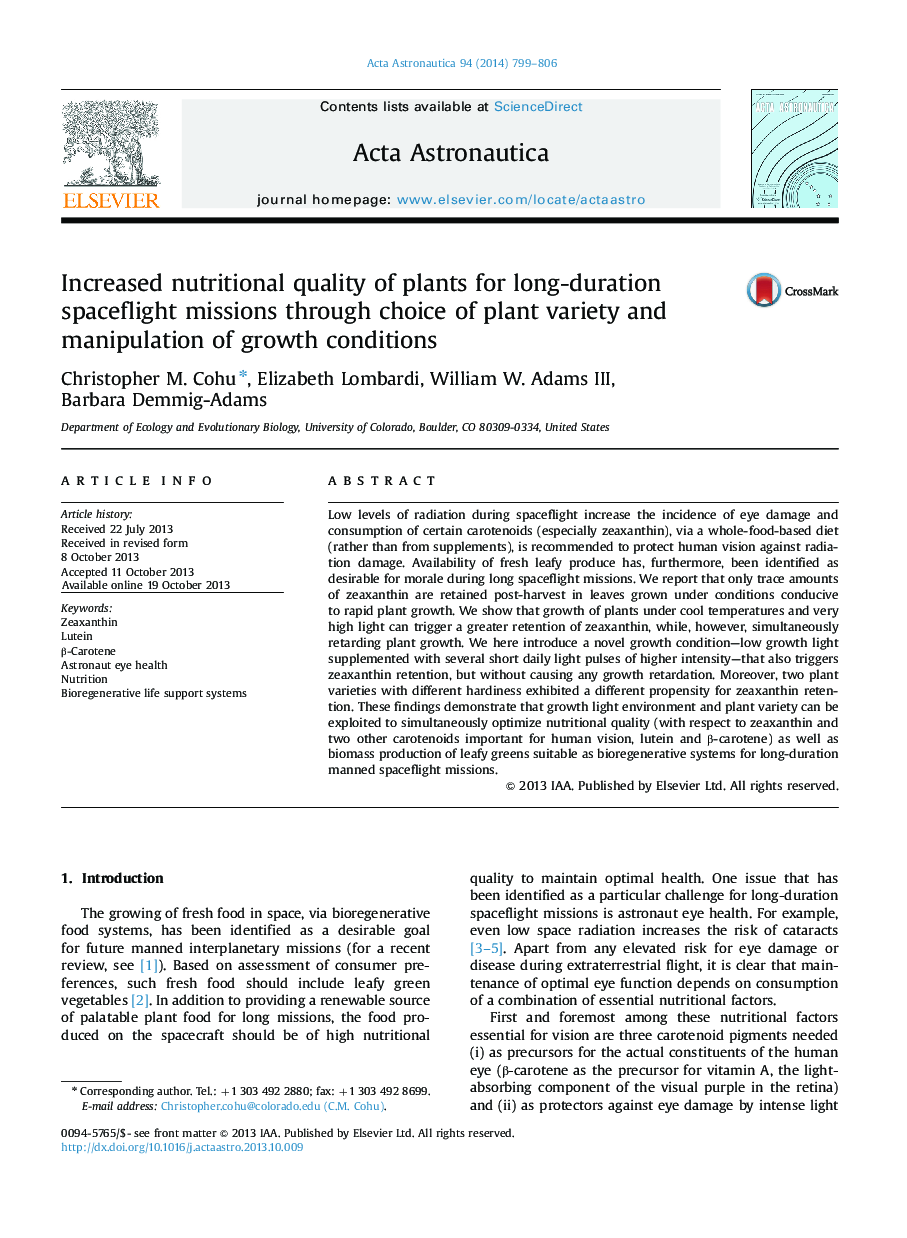| Article ID | Journal | Published Year | Pages | File Type |
|---|---|---|---|---|
| 1714790 | Acta Astronautica | 2014 | 8 Pages |
•Trace amount of zeaxanthin is found in plants grown under constant light intensity.•Adding high light pulses during plant growth increases retention of zeaxanthin.•Plants grown using high light pulses do not lead to reduced biomass accumulation.•Plant variety can be exploited to optimize nutritional quantity of zeaxanthin.
Low levels of radiation during spaceflight increase the incidence of eye damage and consumption of certain carotenoids (especially zeaxanthin), via a whole-food-based diet (rather than from supplements), is recommended to protect human vision against radiation damage. Availability of fresh leafy produce has, furthermore, been identified as desirable for morale during long spaceflight missions. We report that only trace amounts of zeaxanthin are retained post-harvest in leaves grown under conditions conducive to rapid plant growth. We show that growth of plants under cool temperatures and very high light can trigger a greater retention of zeaxanthin, while, however, simultaneously retarding plant growth. We here introduce a novel growth condition—low growth light supplemented with several short daily light pulses of higher intensity—that also triggers zeaxanthin retention, but without causing any growth retardation. Moreover, two plant varieties with different hardiness exhibited a different propensity for zeaxanthin retention. These findings demonstrate that growth light environment and plant variety can be exploited to simultaneously optimize nutritional quality (with respect to zeaxanthin and two other carotenoids important for human vision, lutein and β-carotene) as well as biomass production of leafy greens suitable as bioregenerative systems for long-duration manned spaceflight missions.
